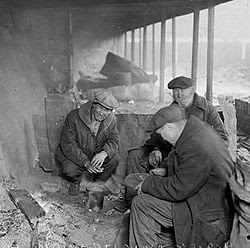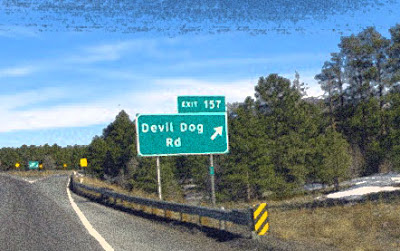Hobo Camps: Riding the Railroads with Hobos
Where did the name “hobo” come from? There are several theories on the name such as the term hoe-boy meaning “farmhand”, or it could be from various greetings, “Ho, boy” or “Ho, beau”, meaning “homeward bound”. The origin of the name is just as mysterious as when hobos were first seen riding the railroads. It was either the mid or late 19th Century and could have been soldiers leaping onto the freight trains home after the American Civil War, or people heading west to a new life.
There were so many folks jumping the trains that in 1906 they estimated that 500,000 hobos were riding from place to place and living out of hobo camps. By 1911 the numbers increased to an astounding 700,000 hobos, tramps and bums. By the 1930’s and during the Great Depression, the hobo population was at its all time highest. There were no jobs to be had in most towns and cities so many decided to take their chances elsewhere and hopped the freight trains looking for work.
This was not an easy life and was extremely risky. Many of these nomadic penniless hobos were usually harassed by the railroad employees, security, and the train’s crew. Not only did they put up with the railroad people but had to fight the dangerous elements. Jumping on a moving train is not only crazy but treacherous as well. One false move and you could lose a limb, get caught between the cars, or ultimately lose your life. Sometimes the weather is dreadful and one could freeze to death, especially those hiding in the ice cars. Others may rob or kill you while you sleep for the minuscule amount of money you might be hiding. Being a hobo was and is not an easy life.
Today they estimate that there are around 20,000 people living as hobos across the country. Even though the trains nowadays are much faster than those of the 1930’s, many are boarded at rail yards. Hobos not only have their own lingo, but also abide by the “Hobo Ethical Code”. These 16 rules were set up by Tourist Union #63 during its 1889 National Hobo Convention in St. Louis, Missouri and voted upon as a valid set of laws to reign the Nation-wide Hobo Body.
When Sharon (Autumnforest) and I were at the abandoned trailer park near Mobile, we noticed deserted campsite nearby. Hanging in the trees was a tarp or blanket with a small table underneath. The ground below looked disturbed as if someone might have been lying on it recently. There was a rusty barrow with two plastic patio chairs nearby, perhaps used for cooking and keeping a fire. There was lots of junk just tossed about in and around the area. We were not sure how long this camp was vacant, but with the extreme Arizona weather, they probably didn’t stay long. Was this a hobo camp? The abandoned trailer park was near the highway and across from that was a railroad track. We were not sure who occupied this camp but were glad there were not there at that time.









Wow! I had no idea there were still hobos. I always think of them as part of the Great Depression. Great story.
ReplyDeleteI was surprised too but they are still out there riding the rails.
ReplyDeleteCool pics as usual Ju! I saw a show a few years ago about railroad murder and they said what you did; there are still many who live the Hobo lifestyle, but are even more dangerous than way back when. I wish I could remember what I saw as far as the program. I had completely forgotten about it until I read your post!
ReplyDeletemy grandfather was a detective for the railroad and he dealt with hobos all the time. the railroad got to the point that when a rail car as inspected and no hobos were found, the door to the car was locked shut using a spike and a special tool that bent it into place. he met many interesting people that rode the rails.
ReplyDeleteTara, I was a bit cautious to not get too close to the camp. I wasn't sure if it was still being used even tho it looked abandoned. I also remember watching a similar show or it could have been the same but can't remember the details. I actually forgot it until you brought it up.
ReplyDeletejaz, that is cool about your grandfather. I bet he has many fascinating stories while working as a detective for the railroad.
Wow - very cool post. I am so fascinated with hobos, I guess b/c I secretly fantasize about the freedom in the day that this would bring. But, like you said, it's a hard and dangerous lifestyle, easily romanticized but not easily lived. I read awhile back that there is still a hobo convention each year - somewhere in the Central States, I think.
ReplyDeleteHeather, I agree about the freedom to roam where ever but unfortunately there is a price to pay most of the time. I also read that they still have hobo conventions, but not sure exactly where.
ReplyDeleteThe convention is in Britt Iowa
ReplyDeleteBritt Iowa
ReplyDelete